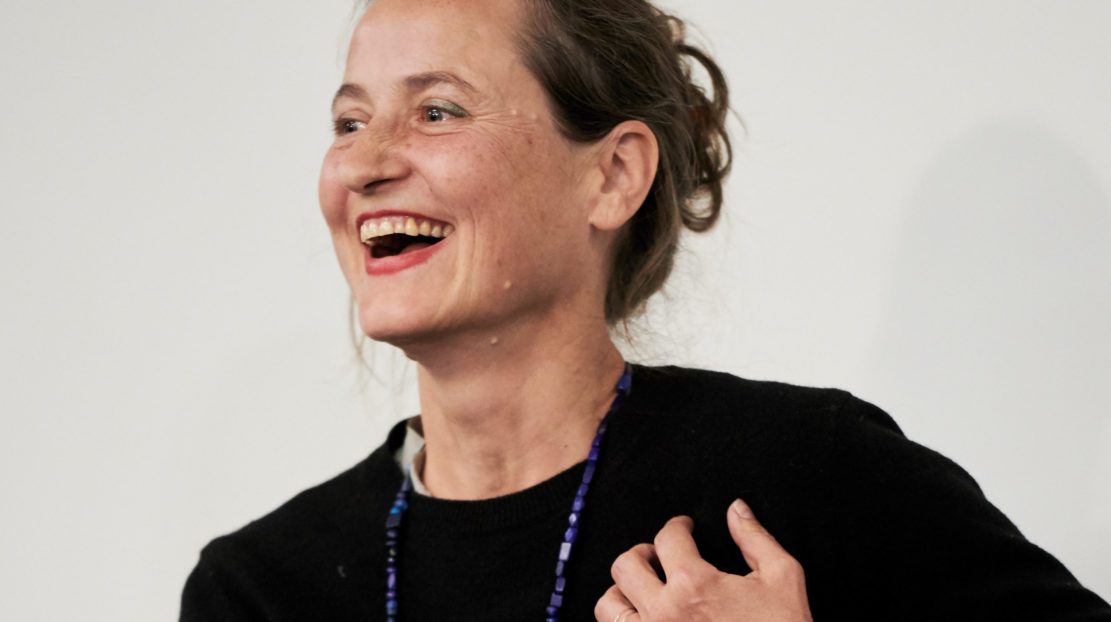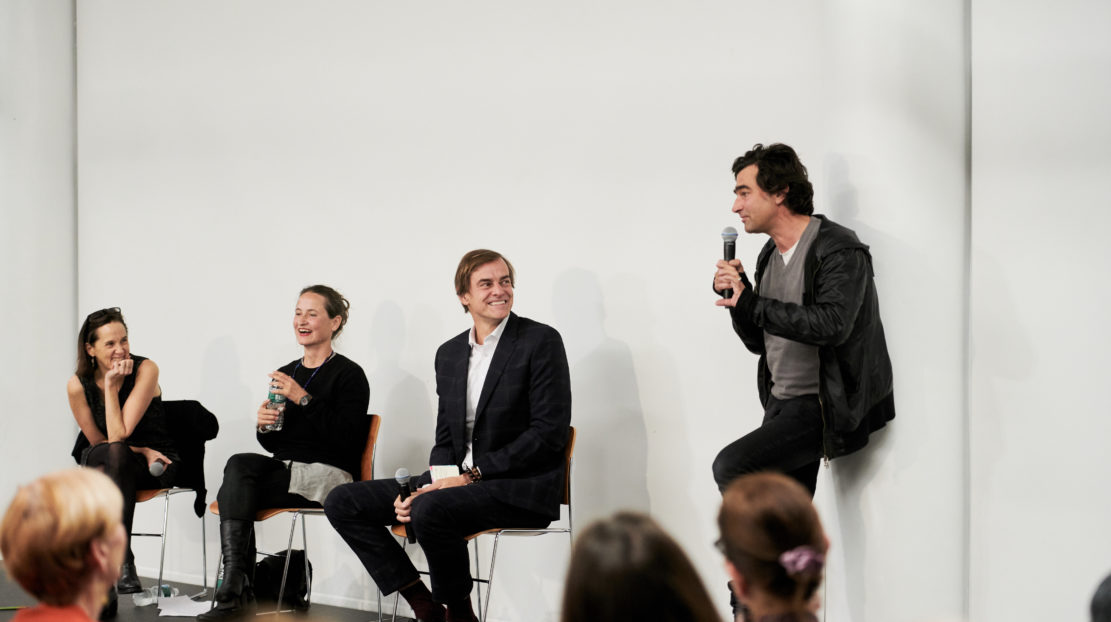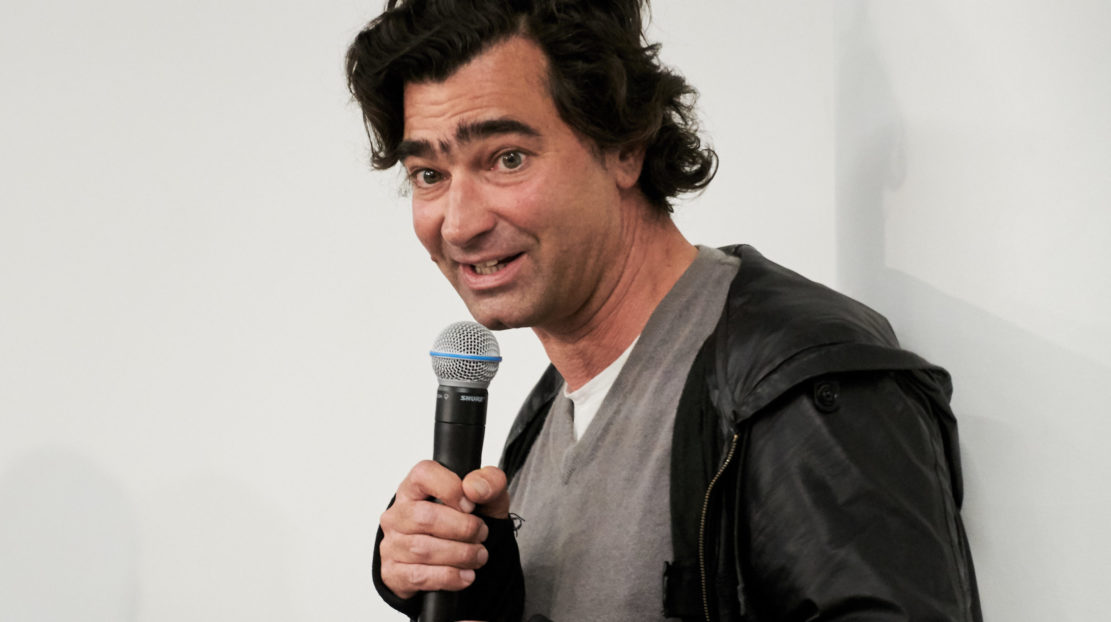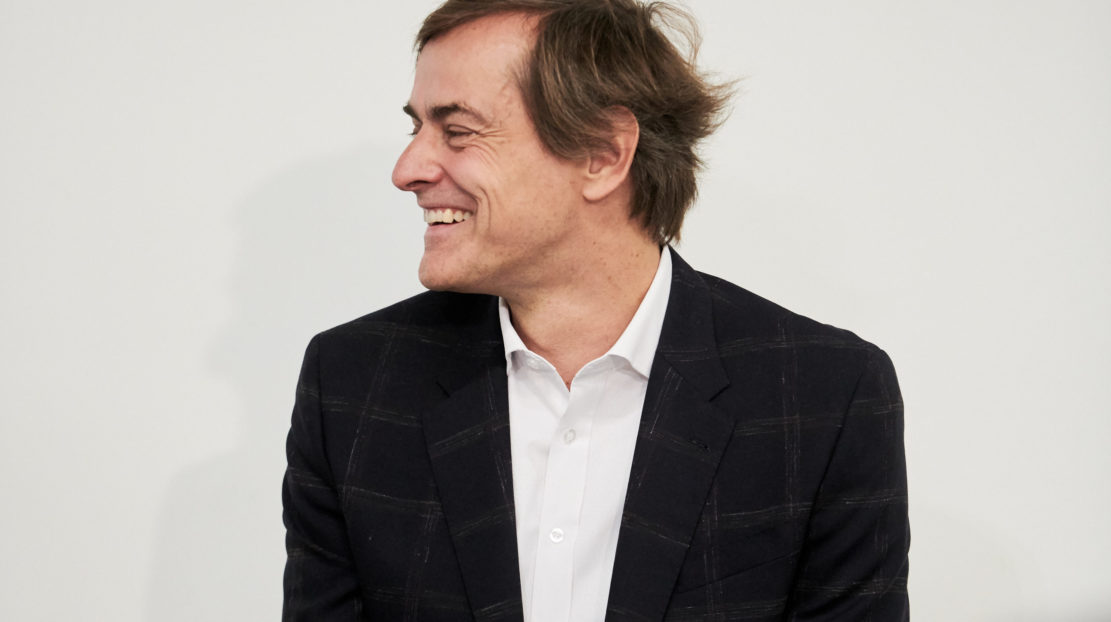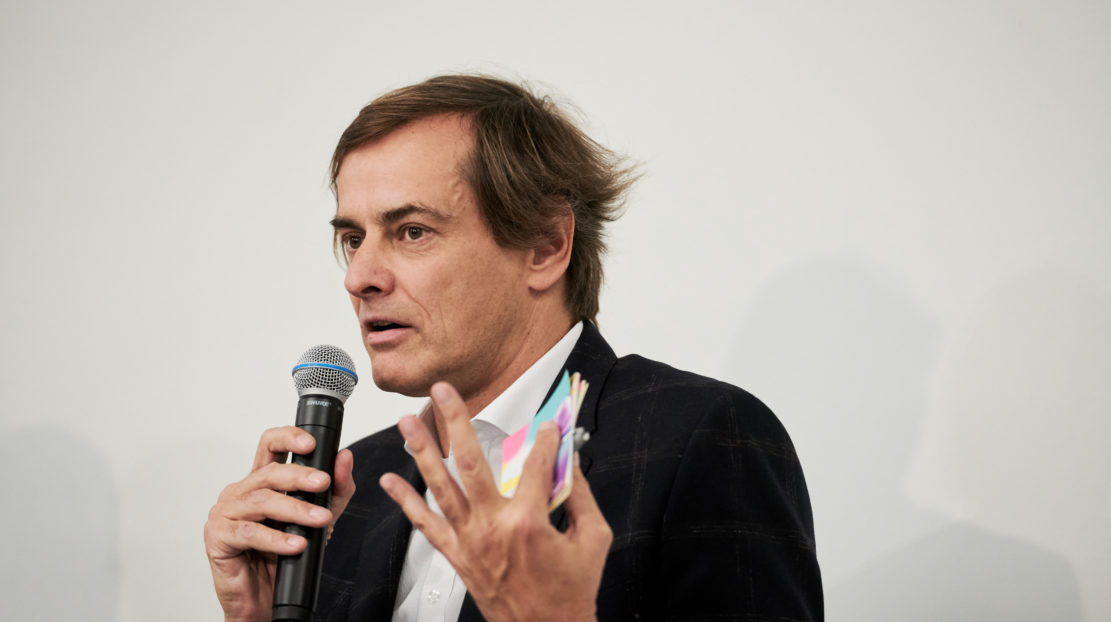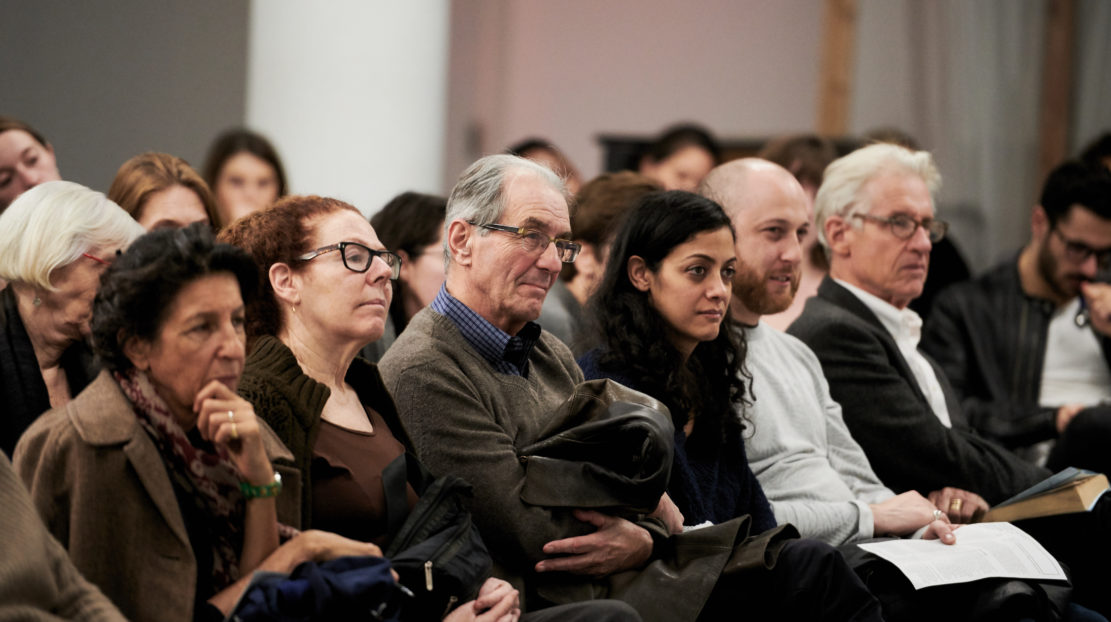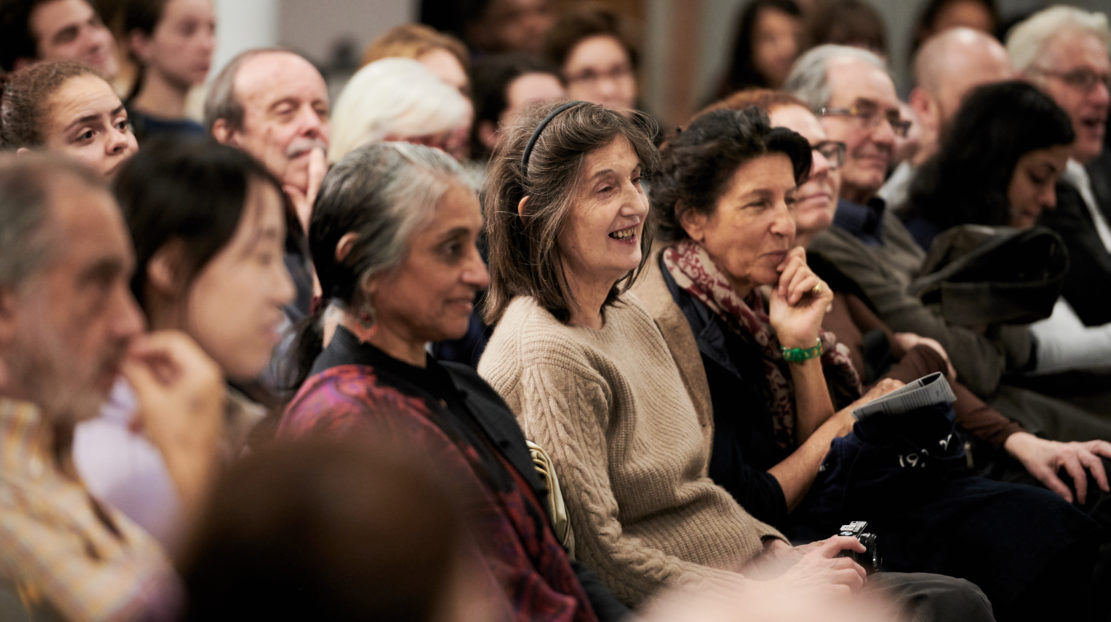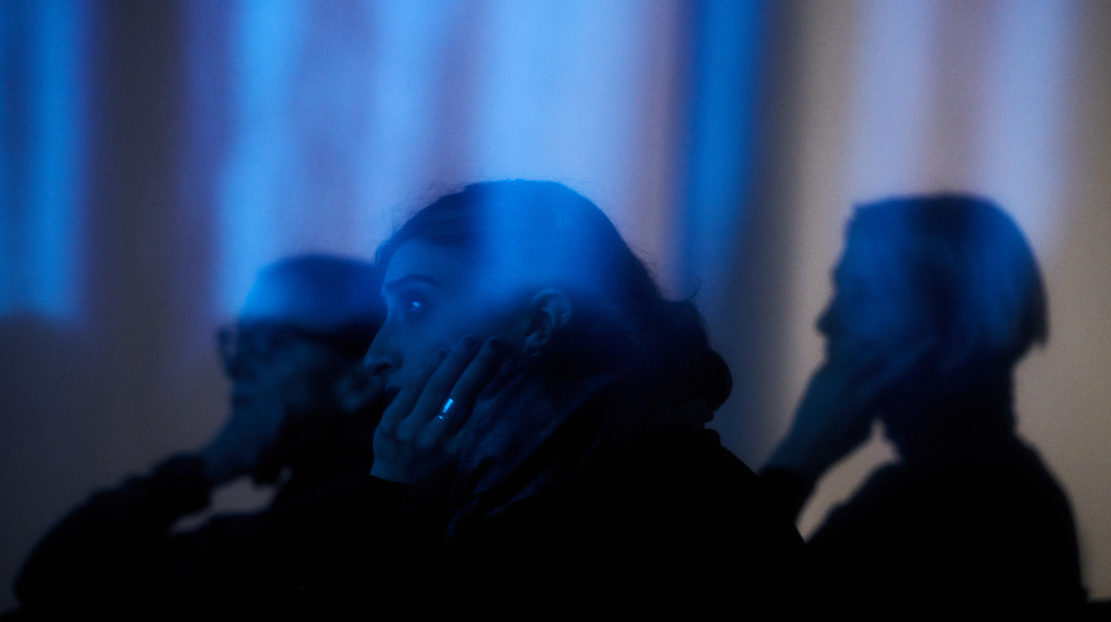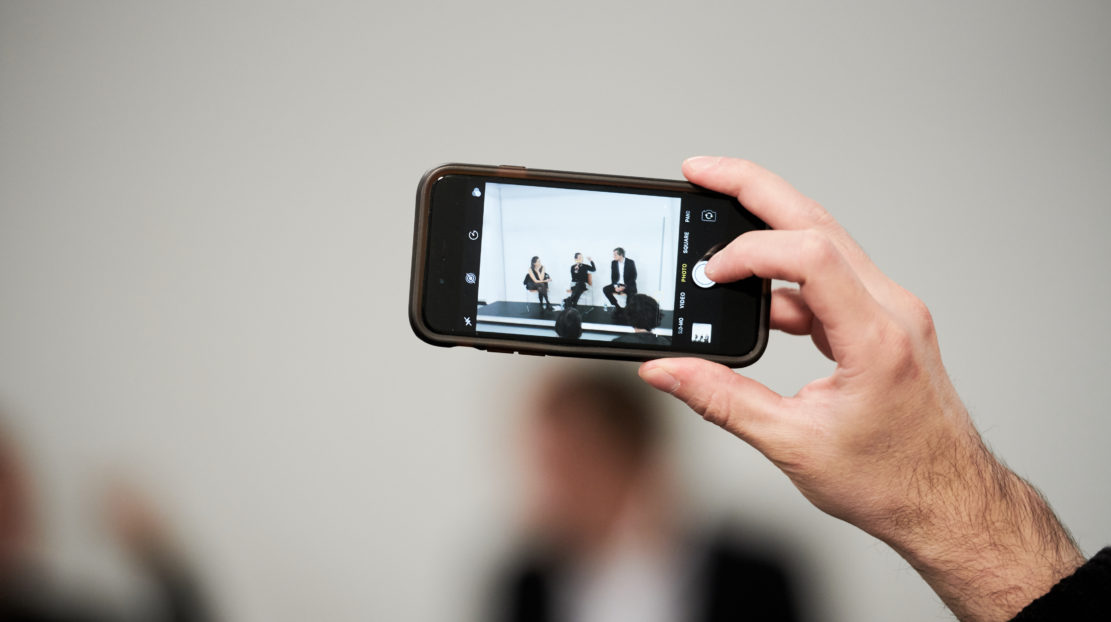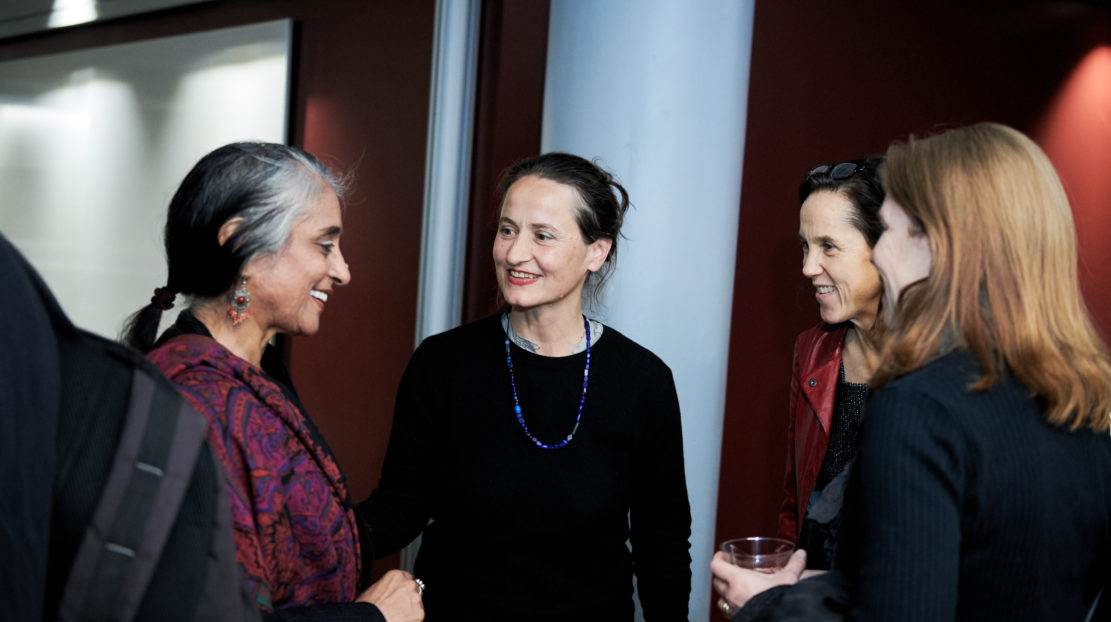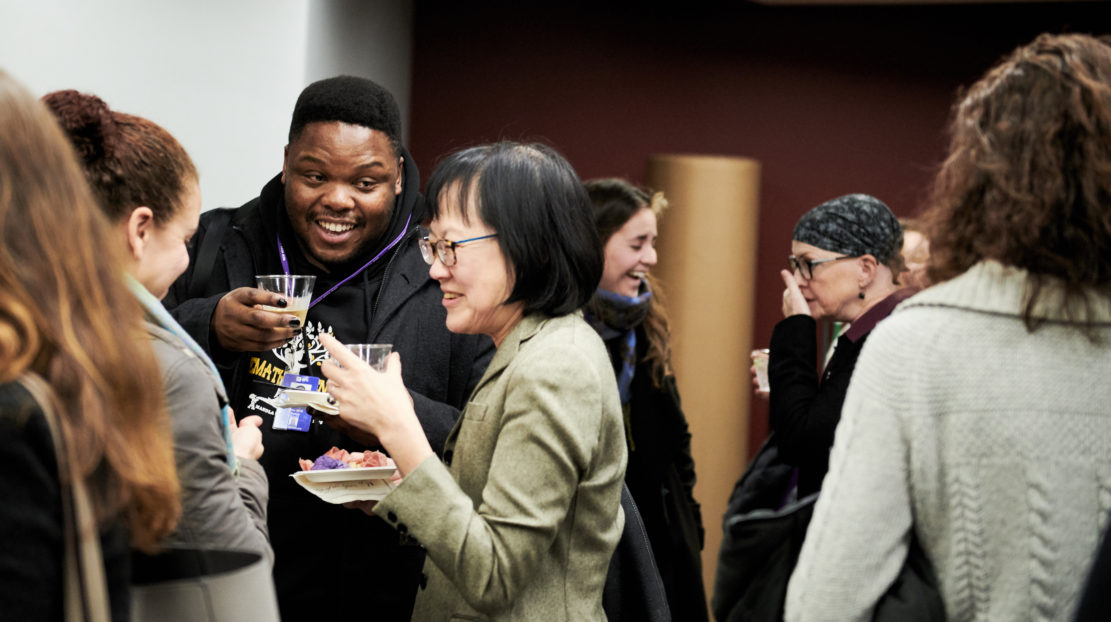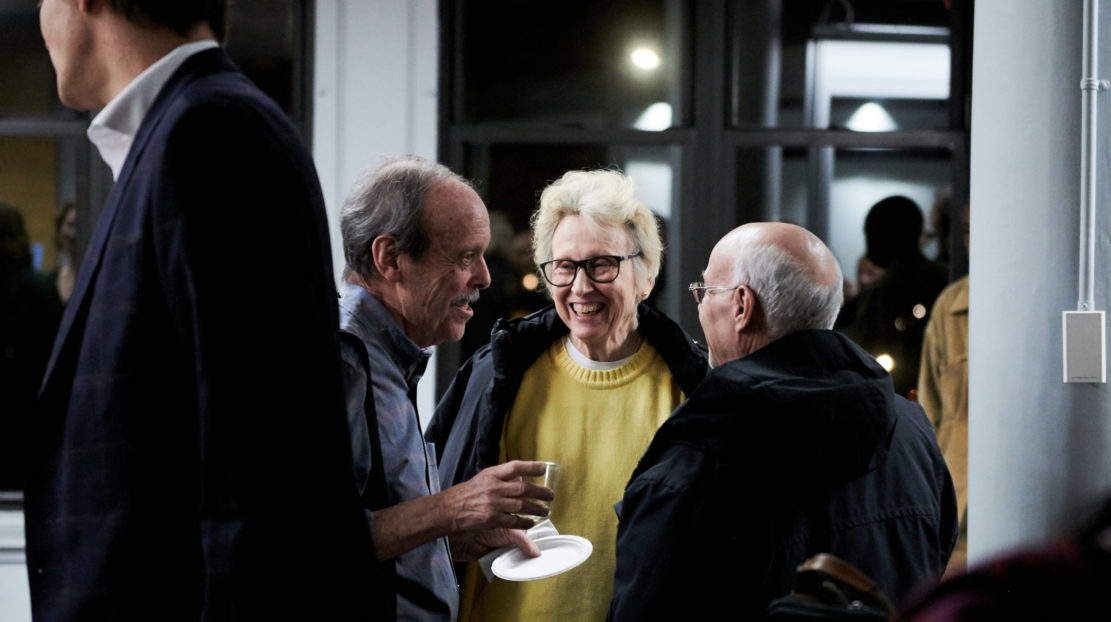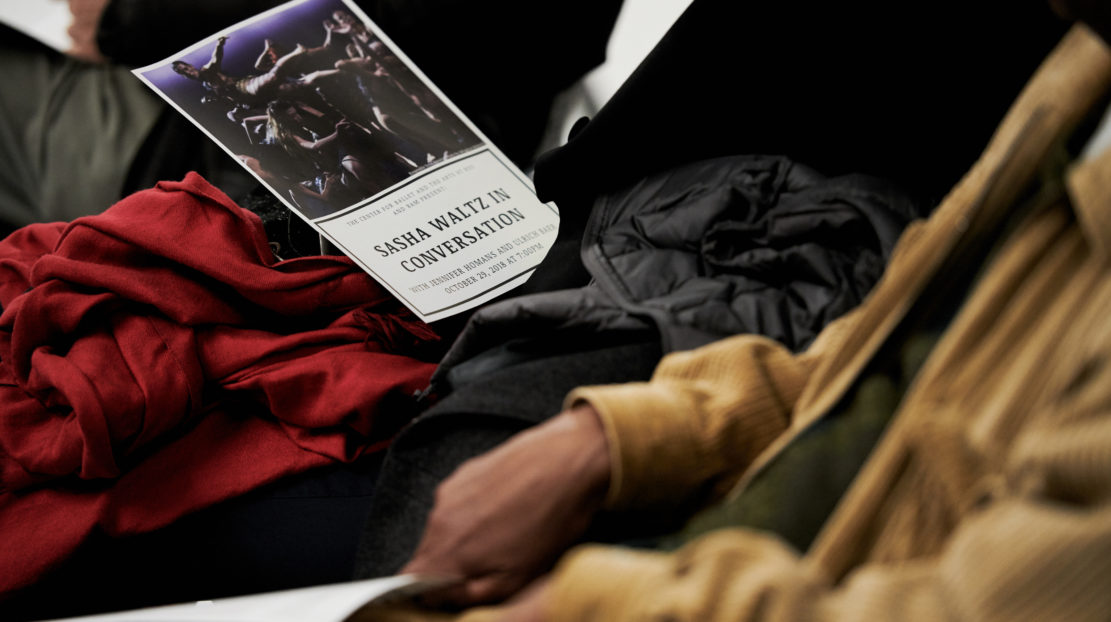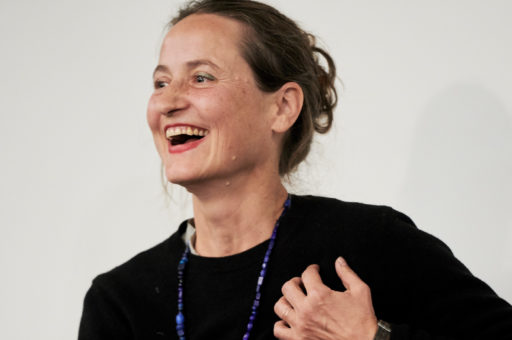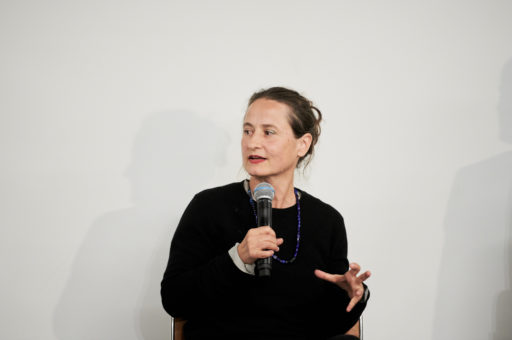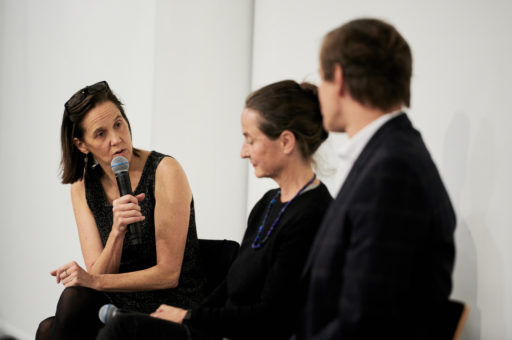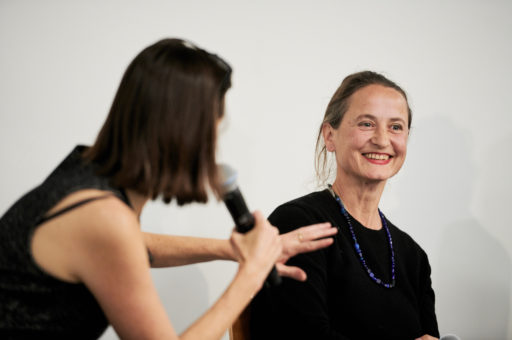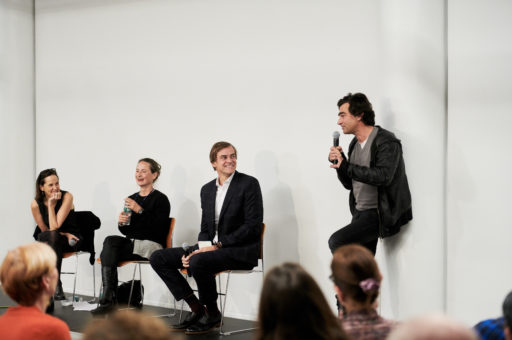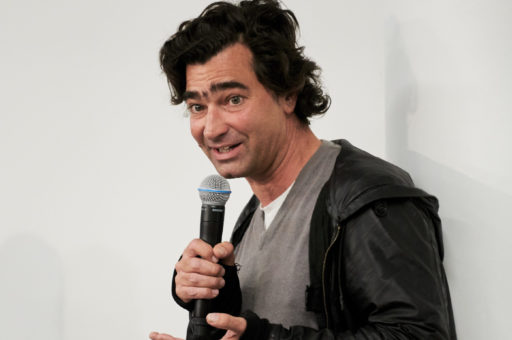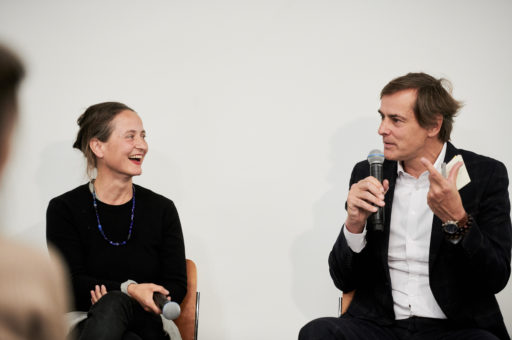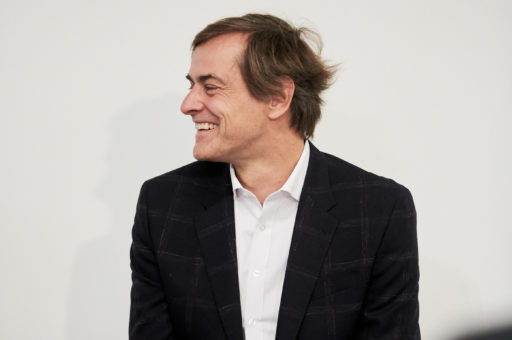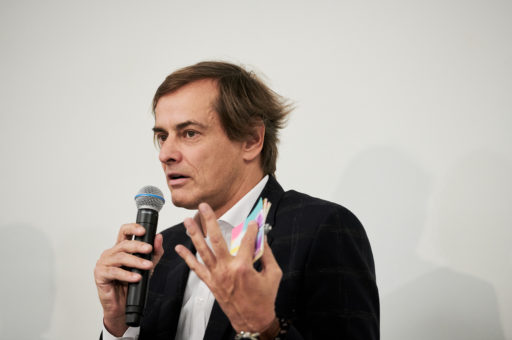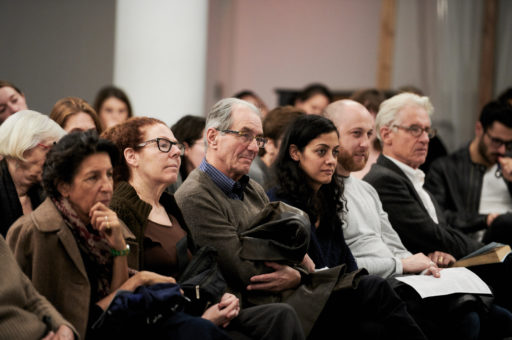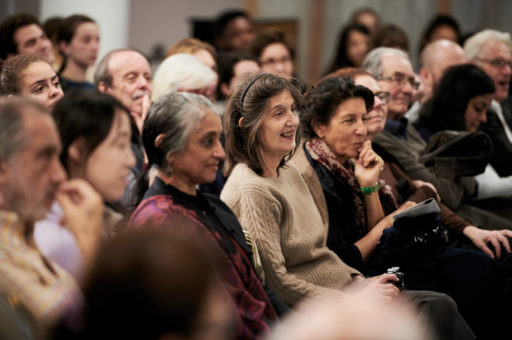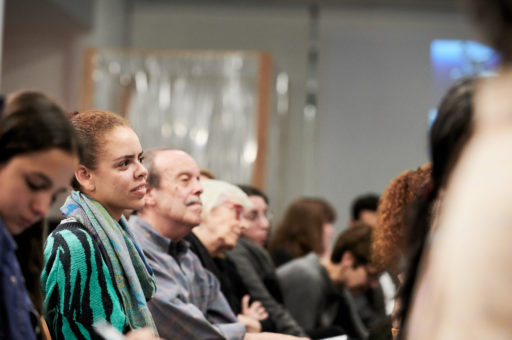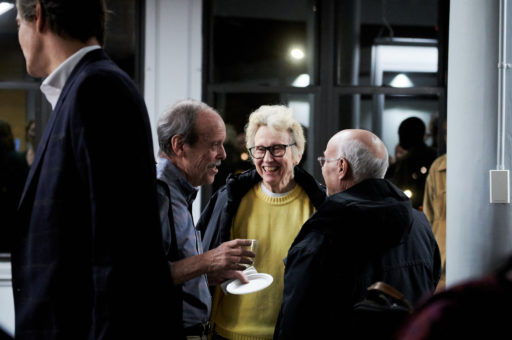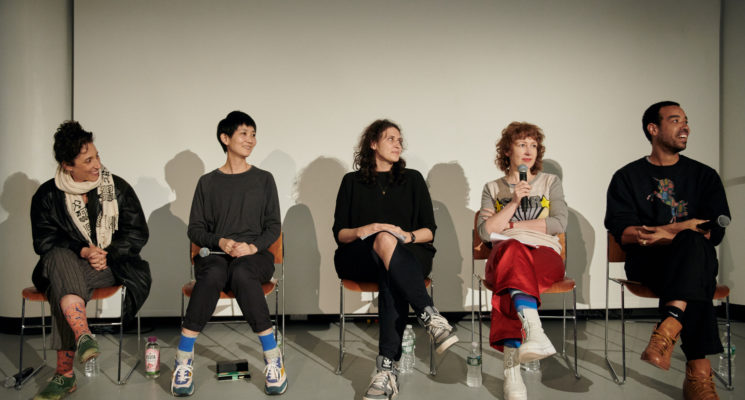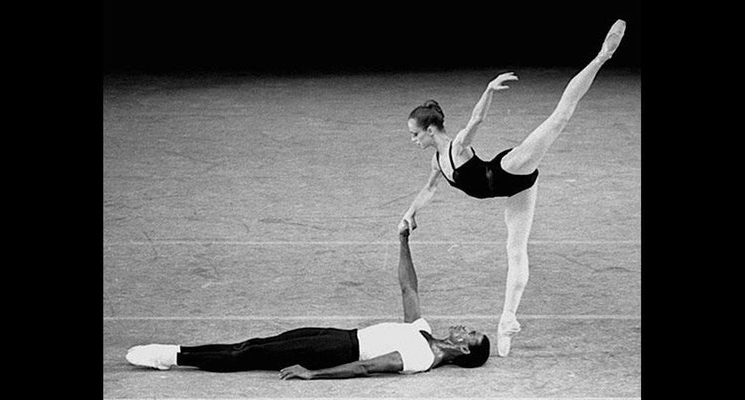*Note: To view this video in high definition, press play. Then, click the full screen button (the white box on the bottom right corner of the video player). Select the grey gear icon at the bottom of the video player. Click “Quality,” then select “1080p.”
To accompany Sasha Waltz‘s participation in BAM’s Next Wave Festival, The Center for Ballet and the Arts at New York University (CBA) and BAM co-presented a discussion with the renowned choreographer, who was recently selected to lead Staatsballett Berlin. Jennifer Homans, CBA Founder and Director, and Ulrich Baer, Professor of German and Comparative Literature at New York University, talked with Waltz about her life and work in the context of German history, culture, and contemporary politics.
A light reception followed the discussion.
Sasha Waltz & Guests’ stay in New York City was made possible through the German Year in the US #wunderbartogether #Deutschlandjahr
Sasha Waltz (direction/choreography) was born in Karlsruhe, Germany. She studied dance and choreography in Amsterdam and New York. In 1993, she founded her company Sasha Waltz & Guests, together with Jochen Sandig in Berlin. In 1996, she opened the acclaimed Sophiensæle.
From 2000–2004, Waltz was named one of the artistic directors of Berlin’s Schaubühne am Lehniner Platz where – among others – she created pieces such as the Körper-trilogy (2000–2002). Once again independent with her company from 2005 on, during the following years various works of Sasha Waltz – among them Dido & Aeneas (2005), Medea (2007), Roméo et Juliette for the Ballet de l’Opéra national de Paris (2007) and Matsukaze (2011) – constituted a whole new genre: the choreographic opera. Furthermore, Sasha Waltz implemented various Dialoge-projects such as Dialoge 09 – Neues Museum at the Neues Museum Berlin and Dialoge 09 – MAXXI at the museum MAXXI in Rome.
In 2012, she was invited by Sir Simon Rattle and the Berliner Philharmoniker to choreograph Rodion Schtschedrin’s Carmen Suite for their education programme, with over 100 pupils performing. In 2013, to celebrate the 100th anniversary of Igor Stravinskys Le Sacre du Printemps, Sasha Waltz created her contemporary vision of Sacre for the classical Ballet Company of the Mariinsky Theatre, later the German premiere danced by Sasha Waltz & Guests and musically directed by Daniel Barenboim took place at the Staatsoper im Schiller Theater Berlin. In the same year the exhibition Sasha Waltz. Installationen. Objekte. Performances, at the ZKM Karlsruhe, presented the choreographer’s work for the first time in the context of visual arts.
In 2014 Sasha Waltz continued her artistic collaboration with Daniel Barenboim at the Berliner Staatsoper by staging Richard Wagner’s Tannhäuser. In the same year, Claudio Monteverdi’s Orfeo choreographed by Sasha Waltz premiered at the Dutch National Opera in Amsterdam. In 2015 besides Orfeo, her choreography Roméo et Juliette (Paris/Milan) could be seen for the first time in Berlin. In 2016 Sasha Waltz developed the new format ZUHÖREN and, with this festival, opens up a third dimension for art and politics. ZUHÖREN was continued in November 2017.
Together with musicians and dancers from her company, in January 2017 she inaugurated the Foyers of the Elbphilharmonie Hamburg with her choreographic installation Figure humaine. Sasha Waltz was awarded the Caroline-Neuber-Preis as well as the French cultural fraternity Officier dans l’Ordre des Arts et des Lettres in 2010 and the Order of Merit of the Federal Republic of Germany in 2011. Since 2013, she is also a member of the Academy of Arts, Berlin. For its anniversary year 2013 her company Sasha Waltz & Guests has been named European Cultural Ambassador by the European Union and was awarded the george tabori ehrenpreis in 2014 by Fonds Darstellende Künste. Besides leading her company, Sasha Waltz will take over the joint artistic direction of Staatsballett Berlin in 2019/20, together with Johannes Öhman who has been the director of the Royal Swedish Ballet in Stockholm.
Jennifer Homans is the author of Apollo’s Angels: A History of Ballet (2010), named one of the ten best books of the year by The New York Times and a finalist for the National Book Critics Circle Award. She is the Founder and Director of The Center for Ballet and the Arts at New York University, where she is also a Distinguished Scholar in Residence. Homans was the Dance Critic for The New Republic for over a decade and has also written for The New York Times, New York Review of Books, Idea among others. She holds a B.A. from Columbia University, and a Ph.D. in Modern European History from New York University. Before becoming a writer and scholar, Homans was a professional dancer and performed with the Pacific Northwest Ballet and other companies. The recipient of a Guggenheim Foundation Fellowship in 2012 and a Cullman Center for Scholars and Writers Fellowship in 2016, she is currently at work on a new book, George Balanchine: A History (Random House).
Ulrich Baer is Professor of German and Comparative Literature in the Faculty of Arts and Sciences. He received his B.A. from Harvard University and his Ph.D. from Yale University before joining the faculty of New York University in 1995. He is a widely published author, editor, and translator, and an expert on modern poetry, contemporary photography, literary theory, and philosophy. Among his many publications are Remnants of Song: Poetry and the Experience of Modernity in Charles Baudelaire and Paul Celan (2000); Spectral Evidence; The Photography of Trauma (2002); 110 Stories: New York Writes After September 11 (2002); Rainer Maria Rilke: Letters on Life (editor and translator; 2005), The Claims of Literature: The Shoshana Felman Reader (co-editor with Emily Sun and Eyal Peretz; 2007); The Rilke Alphabet (2014), and Beggar’s Chicken: Stories from Shanghai (2013). Baer has been awarded a Guggenheim Fellowship, a Getty Fellowship, an Alexander von Humboldt Fellowship, and twice been honored by the NYU Faculty of Arts and Science Golden Dozen teaching award. He writes regularly on photography as a critic and commentator.




